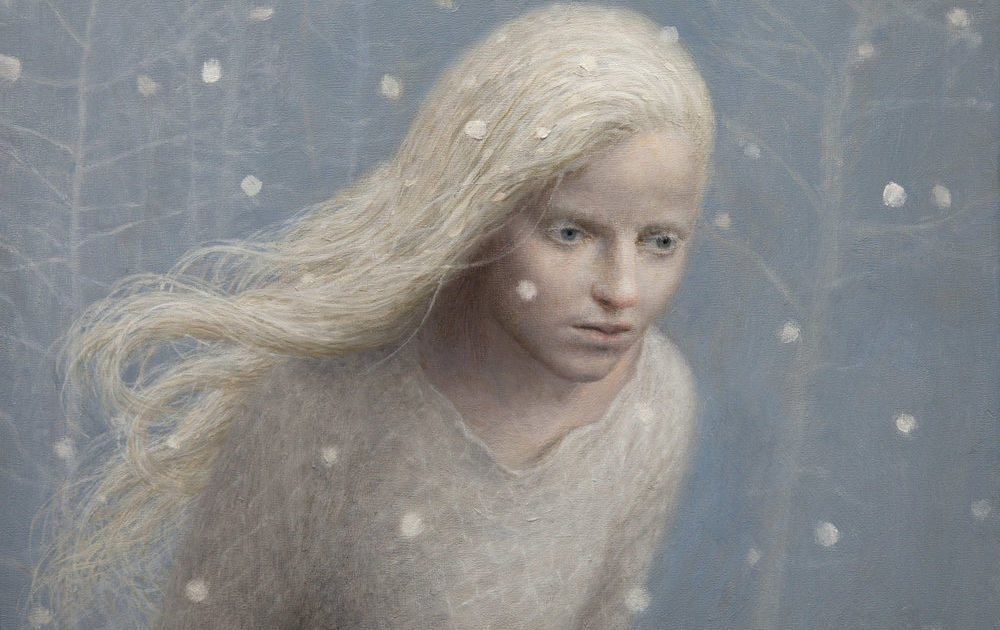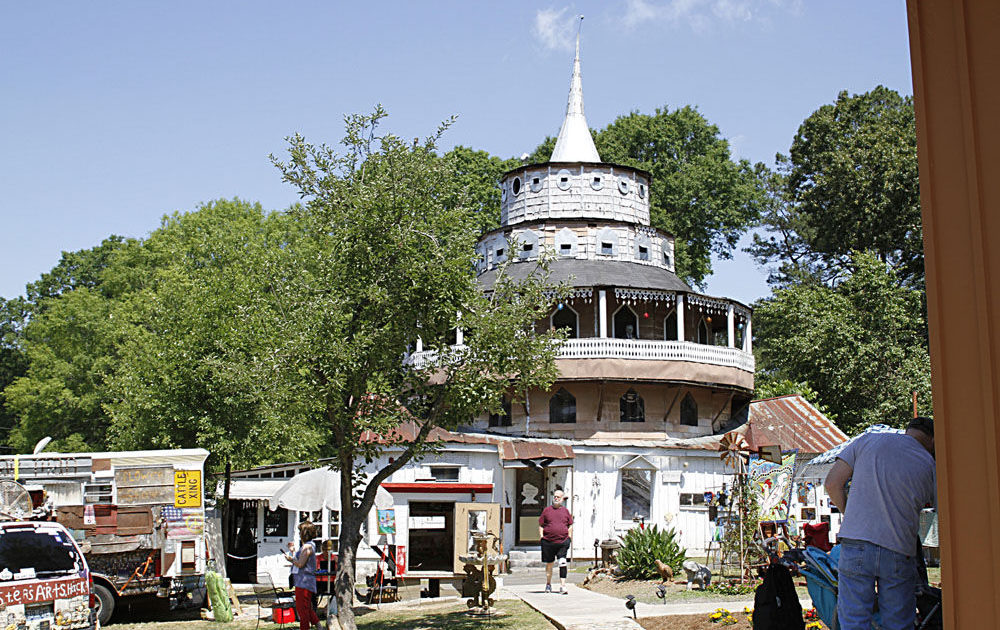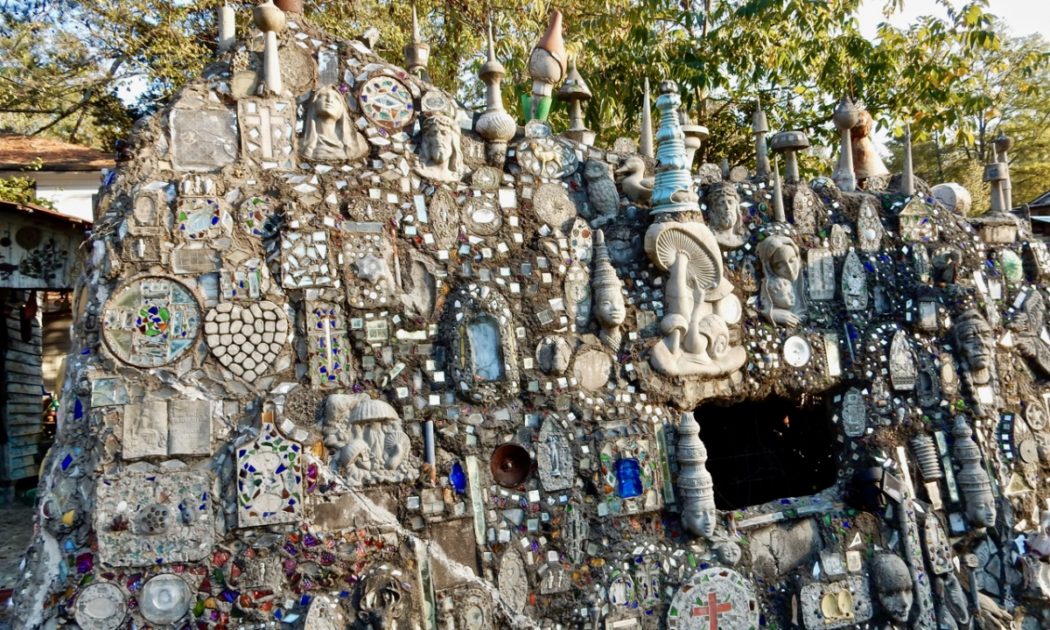
Paint sacred art, make sacred art! It’s the ninth issue of the Playhouse Comics Club! (The above image: Howard Finster’s painting The Angel of the Lord [1987-89].)
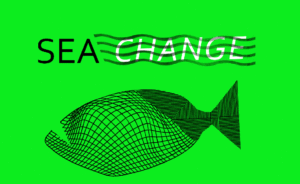 As part of their upcoming Sea Change exhibit—dedicated to the beauty of Earth’s oceans and the threats these waters face due to climate change—Britain’s International Centre for the Picture Book in Society is asking artists of all ages to send them “an illustrated fish or sea creature on the picture side of a postcard” and an environmental message of hope on the other side. All the postcards received will become a part of Sea Change and tour around the world, in conjunction with workshops and other conservation events. The call for Sea Change postcards is here.
As part of their upcoming Sea Change exhibit—dedicated to the beauty of Earth’s oceans and the threats these waters face due to climate change—Britain’s International Centre for the Picture Book in Society is asking artists of all ages to send them “an illustrated fish or sea creature on the picture side of a postcard” and an environmental message of hope on the other side. All the postcards received will become a part of Sea Change and tour around the world, in conjunction with workshops and other conservation events. The call for Sea Change postcards is here.
Aron Wiesenfeld is a painter and penciller whose art flirts with surrealism while remaining anchored in everyday life. He’s created dozens of images of women alone in deserted locales—an empty field, an abandoned playground—and each feels like the distillation of loneliness. Movie director Guillermo del Toro describes Wiesenfeld’s art this way: “Like Hopper, he is concerned with solitude, like Magritte he is bewitched by mystery.” Browse Wiesenfeld’s haunting images at his Instagram.
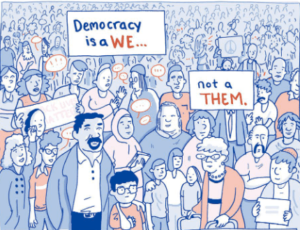 Let’s get ready for the Fourth of July with This is What Democracy Looks Like, a comic from Vermont’s Center for Cartoon Studies about how the United States works on the local, state and national levels, and—more importantly—what we can do to influence policy and get involved in making a more equitable society. Along with teachers and advocates, lead cartoonist and CCS alumnus Dan Nott maps out voting and democratic participation in a non-partisan way, and provides a snapshot of where we stand as a nation. This is What Democracy Looks Like is available for download from Gumroad for free, though small donations are encouraged.
Let’s get ready for the Fourth of July with This is What Democracy Looks Like, a comic from Vermont’s Center for Cartoon Studies about how the United States works on the local, state and national levels, and—more importantly—what we can do to influence policy and get involved in making a more equitable society. Along with teachers and advocates, lead cartoonist and CCS alumnus Dan Nott maps out voting and democratic participation in a non-partisan way, and provides a snapshot of where we stand as a nation. This is What Democracy Looks Like is available for download from Gumroad for free, though small donations are encouraged.
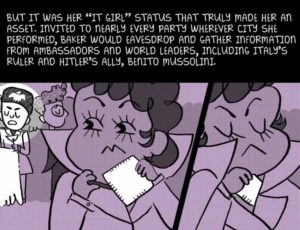 The Nib is an indispensable website for older readers (teens and up) that updates daily with new journalistic, autobiographical, and editorial comics. One of my favorites is 2019’s strip about singer and dancer Josephine Baker’s role as a spy for the French government-in-exile during the World War II occupation of France by the Nazis. Bianca Xunice wrote and drew this piece, which both introduces us to Baker’s international stardom and illuminates a little-known aspect of the icon’s biography. Cool fact: as part of her espionage training, Baker learned Karate and practiced her marksmanship skills until she could “shoot out the flame of a candle within 20 yards”!
The Nib is an indispensable website for older readers (teens and up) that updates daily with new journalistic, autobiographical, and editorial comics. One of my favorites is 2019’s strip about singer and dancer Josephine Baker’s role as a spy for the French government-in-exile during the World War II occupation of France by the Nazis. Bianca Xunice wrote and drew this piece, which both introduces us to Baker’s international stardom and illuminates a little-known aspect of the icon’s biography. Cool fact: as part of her espionage training, Baker learned Karate and practiced her marksmanship skills until she could “shoot out the flame of a candle within 20 yards”!
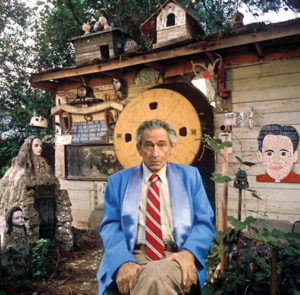 Howard Finster (1915-2001) was a Christian pastor and self-trained artist who created over 10,000 paintings during his lifetime, a calling begun in 1976 when, while painting a bicycle, he (in the words of a short Finster biography) “noticed that the paint smudge on the tip of his finger had formed a human face. A voice spoke to him, saying, ‘paint sacred art.’”
Howard Finster (1915-2001) was a Christian pastor and self-trained artist who created over 10,000 paintings during his lifetime, a calling begun in 1976 when, while painting a bicycle, he (in the words of a short Finster biography) “noticed that the paint smudge on the tip of his finger had formed a human face. A voice spoke to him, saying, ‘paint sacred art.’”
Perhaps his most important project, however, was the Plant Farm Museum (later dubbed Paradise Garden), his home in Summerville, Georgia decorated with over 40,000 folk art sculptures. (Paradise Garden is now a public park open to visitors.) Finster also became a celebrity in the 1980s when he became friends with the members of two influential alt-rock bands, R.E.M. and Talking Heads, and painted album covers for both.
The official Finster website maintained by his family is here; there is also a site for the Paradise Garden Foundation, with information about Finster’s unique home and the Airbnb spaces currently available on site. Below are some photos from Paradise Garden.
This weekly blog post is written and compiled by Craig Fischer. To send along recommendations, ideas, and comments, contact Craig at [email protected] [.]


